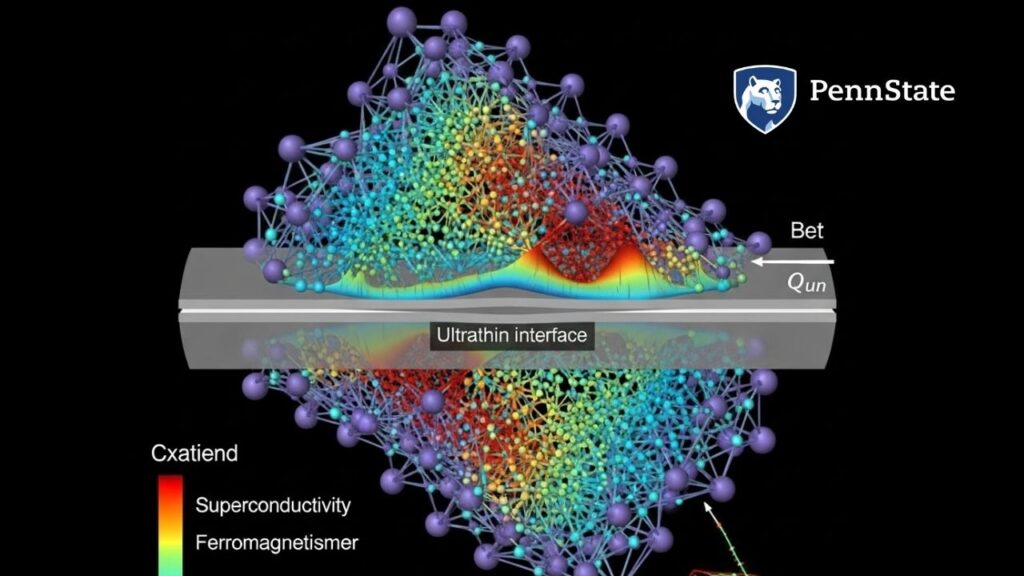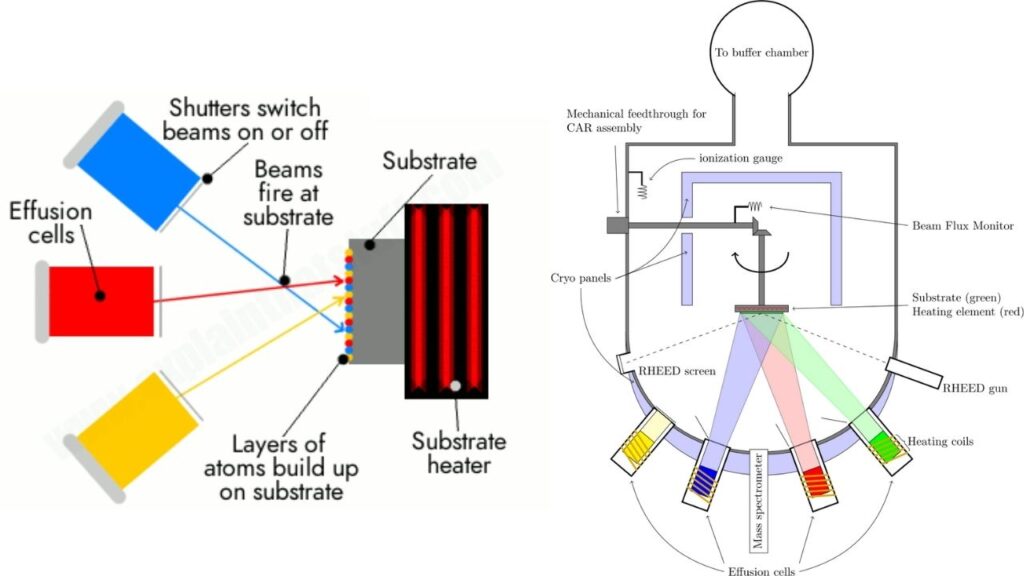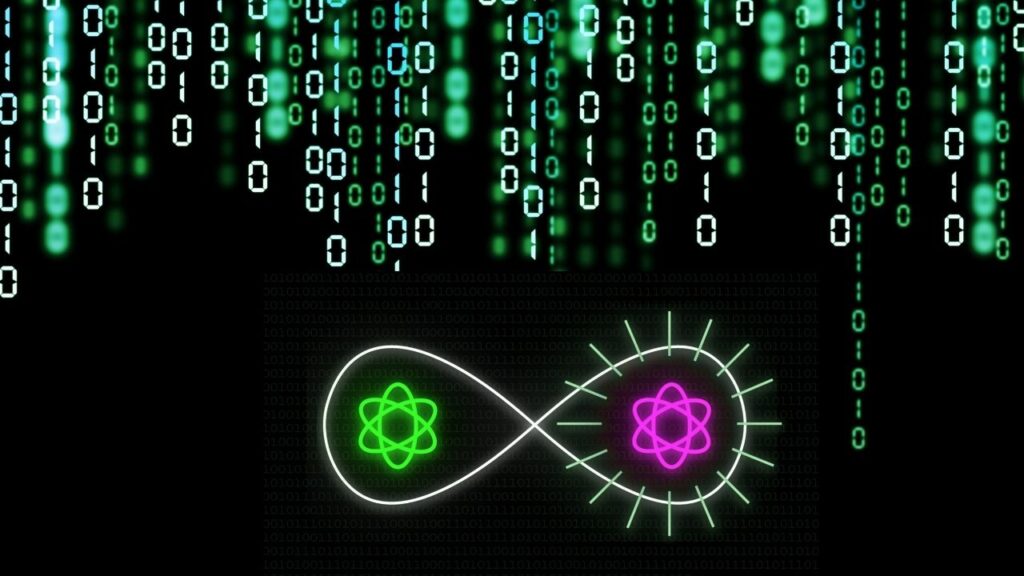Penn State Develops Chiral Topological Superconductor Hybrid: In a groundbreaking development, Penn State University researchers have created a chiral topological superconductor hybrid, marking a pivotal advancement in the quest for topologically protected quantum computers. This hybrid material uniquely combines three extraordinary properties—superconductivity, ferromagnetism, and topological order—within a single ultrathin interface.

Why is this such a big deal? Because it’s the first time scientists have successfully integrated all three characteristics in a single, scalable material system. This integration opens the door to creating fault-tolerant quantum computers, machines capable of solving complex problems beyond the reach of classical computers, with enhanced stability and speed.
The discovery is not just a leap in material science but a promising step toward harnessing chiral Majorana modes—exotic quasiparticles essential for topological quantum computing. This article will break down this complex topic into digestible sections, highlighting its importance for both curious learners and experts alike.
Penn State Develops Chiral Topological Superconductor Hybrid
| Feature | Details |
|---|---|
| Innovation | Chiral Topological Superconductor Hybrid |
| Developed By | Penn State University |
| Key Materials | Ferromagnetic topological insulator (Cr-doped (Bi,Sb)₂Te₃) + FeTe |
| Breakthrough | Coexistence of superconductivity, magnetism, and topological order |
| Significance | Enables chiral Majorana modes for quantum computing |
| Experimental Tools | ARPES, magnetic circular dichroism, HRTEM, muon spin relaxation |
| Date of Publication | February 8, 2024 |
| Published In | Science Magazine |
| Applications | Topological quantum computing, advanced nanoelectronics |
| Official Penn State Link | research.psu.edu |
Penn State’s creation of a chiral topological superconductor hybrid is a milestone in quantum materials research. By integrating superconductivity, magnetism, and topological properties into a single, scalable system, this hybrid opens new avenues for building fault-tolerant quantum computers. It combines fundamental physics breakthroughs with practical scalability, positioning it as a leading material for the future of quantum technology.
What Is a Chiral Topological Superconductor?

To fully appreciate the significance of Penn State’s discovery, it’s important to understand the fundamental concepts behind the terms chiral, topological, and superconductor.
Understanding Superconductors
A superconductor is a special material that can conduct electricity without resistance when cooled below a critical temperature. This means no energy is lost as heat during electrical transmission—a phenomenon with vast implications for energy efficiency. Traditional superconductors like niobium-titanium require very low temperatures (close to absolute zero) to work, which limits their practical applications.
What Makes a Material Topological?
A topological material has a special kind of electronic structure that allows electrons to move on its surface or edges in ways that are immune to defects, impurities, or disruptions. The term “topological” refers to properties preserved under continuous deformation—like how a donut and a coffee mug have the same number of holes. In materials, this means surface states remain conducting even when the bulk material is insulating.
Chirality in Physics
Chirality means “handedness.” In physics, a chiral edge state allows electrons to flow in only one direction (either clockwise or counterclockwise) along the edge of a material. This one-way movement is robust against scattering, making it ideal for carrying information with high fidelity.
The Hybrid Effect
By combining these three properties—superconductivity, topology, and chirality—Penn State researchers have created a quantum material that can host chiral Majorana modes. These modes are predicted to be stable, topologically protected quasiparticles that are their own antiparticles, crucial for developing fault-tolerant quantum computers.
How Did Penn State Achieve This?
The road to creating this hybrid was not straightforward. It required advanced materials engineering and characterization methods.
Materials and Fabrication
The team used molecular beam epitaxy (MBE), a highly controlled method that allows scientists to deposit atomic layers with near-perfect precision. This technique is essential for creating clean interfaces where new quantum phenomena can emerge.

They built a bilayer structure:
- Top layer: A ferromagnetic topological insulator — specifically, chromium-doped (Bi,Sb)₂Te₃. This material exhibits ferromagnetism (a form of magnetism like in iron) and topological surface states.
- Bottom layer: An antiferromagnetic metal—FeTe—which itself is not superconducting but supports strong magnetic interactions.
Neither layer exhibits superconductivity alone. But when combined, superconductivity emerged at their interface, a rare and highly sought-after phenomenon.
Confirming the Phenomena
The researchers applied multiple advanced experimental tools:
- Angle-Resolved Photoemission Spectroscopy (ARPES): Confirmed the existence of Dirac surface states, a hallmark of topological insulators, showing the material’s electronic structure at the surface.
- Muon Spin Rotation (μSR): Verified the presence and robustness of superconductivity, even with coexisting magnetism.
- Magnetic Circular Dichroism (MCD): Probed the magnetic properties to ensure ferromagnetism was maintained.
- High-Resolution Transmission Electron Microscopy (HRTEM): Showed the sharp, clean interface essential for hybrid behavior.
Why This Discovery Matters: Practical Impact
The Challenge of Combining Magnetism and Superconductivity
In most materials, magnetism and superconductivity don’t get along. Magnetic fields tend to disrupt the delicate electron pairing necessary for superconductivity. This makes it challenging to find or engineer materials where these properties coexist.
Penn State’s hybrid defies this trend by supporting superconductivity in the presence of magnetic order. This coexistence is crucial because the interaction between superconductivity and magnetism at the interface leads to chiral topological superconductivity—the key for hosting Majorana modes.
Unlocking Chiral Majorana Modes
Chiral Majorana modes are theoretical quasiparticles that hold great promise for quantum computing. Unlike conventional qubits, which are fragile and error-prone, Majorana-based qubits are topologically protected. This means they are naturally resistant to local disturbances or noise, addressing one of the biggest hurdles in building practical quantum computers.
Scalable Manufacturing Potential
Because the hybrid is grown using molecular beam epitaxy, it can be fabricated at wafer-scale, making it compatible with existing semiconductor manufacturing processes. This scalability is vital for moving beyond laboratory experiments into real-world quantum devices.
Implications for Quantum Computing
Fault-tolerant quantum computers could transform industries by solving complex optimization problems, simulating molecules for drug discovery, or breaking encryption. Materials like Penn State’s hybrid could be the backbone of these future machines.
Comparison With Other Quantum Materials
Several approaches to quantum computing use materials designed to host Majorana modes:
| Approach | Advantages | Limitations |
|---|---|---|
| Semiconductor-superconductor nanowires (InSb/Nb) | Established platforms for Majorana modes | Complex fabrication, require ultra-low temperatures, sensitive to disorder |
| Topological insulator-superconductor heterostructures | Robust surface states | Often require non-magnetic conditions to maintain superconductivity |
| Penn State’s Chiral Hybrid | Coexistence of magnetism, superconductivity, topology in one system | Early stage; needs further exploration for device integration |
Penn State’s hybrid is unique in simultaneously integrating magnetism, superconductivity, and topological surface states on a single platform, making it more robust and scalable than many existing systems.
Potential Real-World Applications
1. Quantum Computing Hardware
By hosting chiral Majorana modes, this material could enable the creation of topologically protected qubits. These qubits are the foundation for fault-tolerant quantum computers that can operate longer and with fewer errors.
2. Advanced Electronics
Chiral edge states allow one-way electron flow without backscattering, ideal for low-power, high-speed electronic devices with minimal energy loss.
3. Quantum Communication and Cryptography

Stable topological qubits can be leveraged to develop quantum encryption systems that are virtually impervious to hacking, providing future-proof data security.
Carbon Emissions From Tech Sector Rise With AI Expansion, Report Warns
AI Predicts Stronger Metal‑Doped Materials With Improved Mechanical Properties
Ultrasound Technique Accurately Detects Defects in Aluminum Manufacturing
FAQs About Penn State Develops Chiral Topological Superconductor Hybrid
What makes this hybrid different from ordinary superconductors?
Ordinary superconductors lose their superconductivity when exposed to magnetism. This hybrid maintains superconductivity despite strong magnetic interactions, thanks to its unique atomic-scale structure.
How do chiral Majorana modes improve quantum computing?
They provide topological protection, meaning qubits made from these modes are naturally resistant to noise and local errors, drastically improving quantum computer stability.
What is molecular beam epitaxy (MBE)?
MBE is a technique that allows scientists to deposit atoms layer-by-layer with atomic precision, essential for creating clean, defect-free interfaces in advanced materials.
When might this technology become commercially viable?
While promising, this is still early-stage research. However, its scalable fabrication method suggests potential integration into quantum devices within the next decade, pending further development.
Why is the discovery published in Science important?
Publishing in Science, a prestigious peer-reviewed journal, indicates the research’s high credibility, originality, and significance to the global scientific community.






